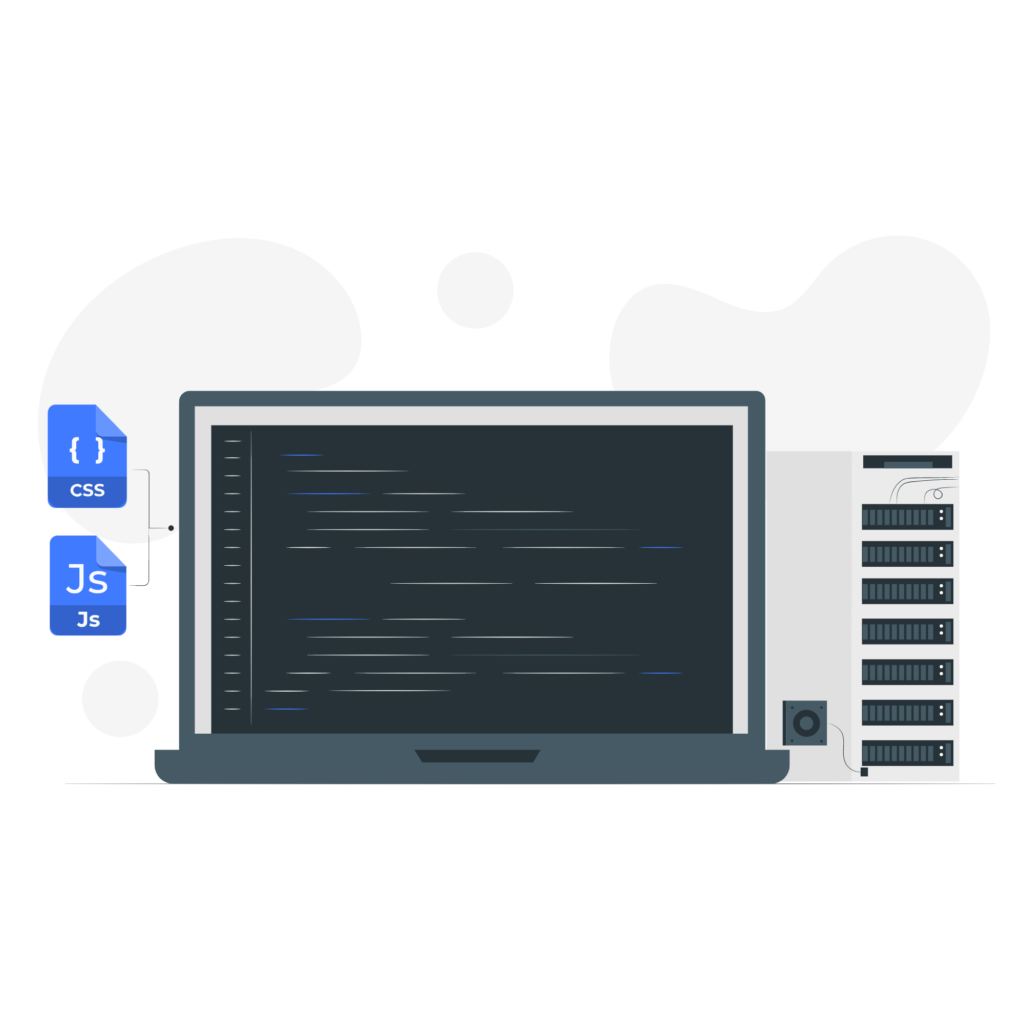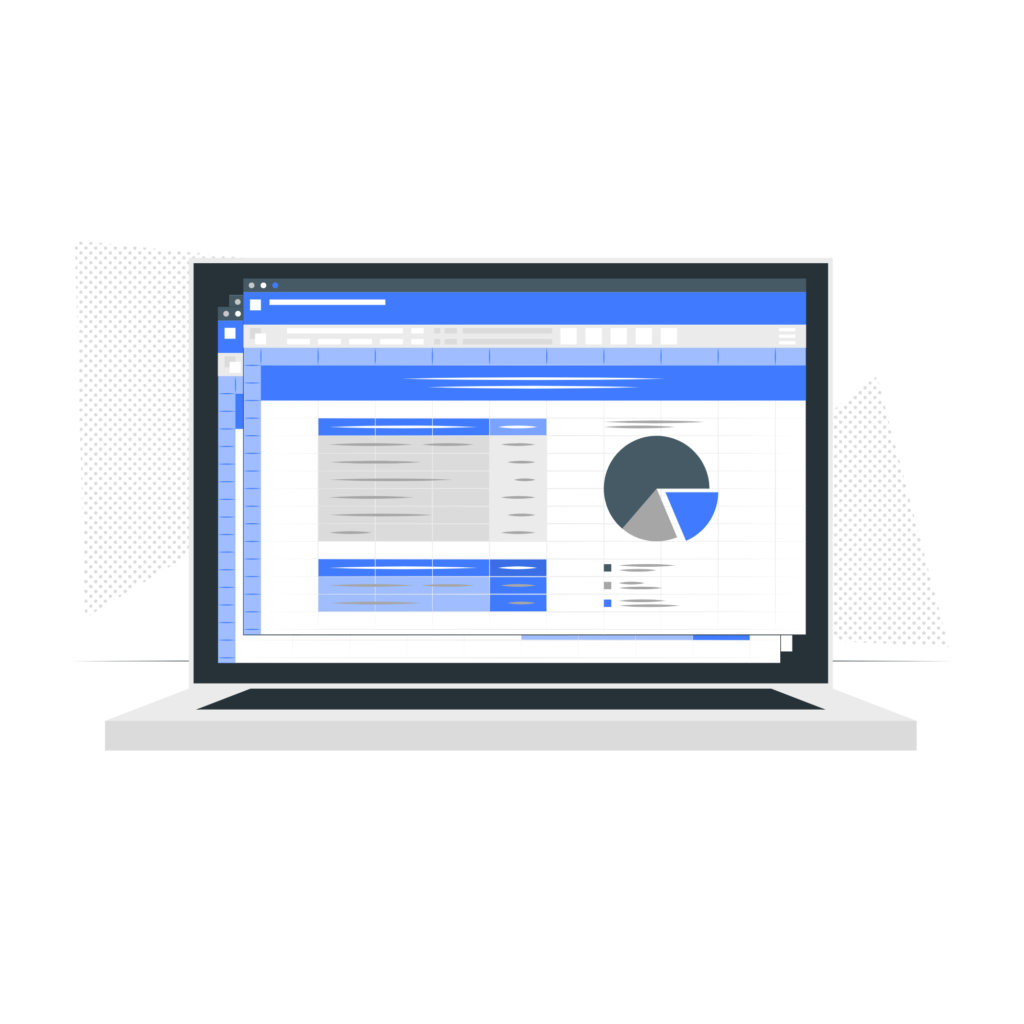Whether you’re a nurse, physician, or allied health professional, staying up-to-date on these trends is essential for maintaining compliance with regulatory and accreditation standards, improving patient outcomes, and advancing your career.
So, let’s dive into the world of healthcare credentialing and discover what you need to know to stay ahead of the game.
What is Healthcare Credentialing and Why is it Important?
Healthcare credentialing is important for several reasons. First, it ensures the quality and safety of healthcare services for patients. By credentialing healthcare providers, organizations can verify that they have the necessary knowledge, skills, and competencies to provide proper care and treatment. Credentialing also helps to prevent medical errors, malpractice, fraud, and abuse.
Second, it benefits healthcare providers by enhancing their reputation, credibility, and career opportunities. Credentialing shows that healthcare providers are qualified, competent, and up-to-date with the latest developments and best practices in their field, granting access to more patients, payers, and networks.
Third, it benefits payers and regulators by ensuring compliance and trust in healthcare. Credentialing helps payers to verify that healthcare providers are authorized to offer services to their members and that they meet the quality and performance standards of their plans.
How COVID-19 Impacted Healthcare Credentialing
The pandemic has increased the demand for telehealth, remote care, and cross-state licensure, as well as the need for rapid and flexible deployment of healthcare providers to respond to the surge of cases. At the same time, COVID has also accelerated the adoption of innovative solutions and best practices to streamline and improve the credentialing process.
The Impact of COVID-19 on healthcare credentialing
The COVID-19 pandemic has increased the demand for telehealth and remote care services, as patients seek to access care from home and avoid exposure to the virus. This has required healthcare providers to obtain credentialing and licensure for telehealth practice, which may vary by state and payer.
The pandemic has also created the need for healthcare providers to provide care across state borders or relocate to certain areas with high needs. To facilitate this, some of the normal requirements for credentialing and licensure have been temporarily relaxed by federal or state waivers or declarations. However, these waivers or declarations are not permanent and may expire or change depending on the public health emergency status.
Moreover, COVID has required healthcare organizations to expedite the credentialing process and grant emergency privileges to qualified providers who can help in critical areas such as hospitalists, intensivists, pulmonologists, and respiratory therapists, as well as other specialties and settings that have been affected by the pandemic. This has been addressed by enhancing communication and information sharing among healthcare organizations, payers, regulators, and providers through various platforms and initiatives that aim to streamline the credentialing and verification process and reduce duplication and delays.
This challenging landscape and the rise of technology have paved the way for innovation in the credentialing field. Let’s take a look at some of the trends, that could completely revolutionize the way healthcare providers are being credentialed.

How Artificial Intelligence is Transforming Healthcare Credentialing
Artificial intelligence is the ability of machines or software to perform tasks that normally require human intelligence, such as reasoning, learning, decision-making, and problem-solving. AI can significantly affect healthcare credentialing by automating tasks, improving accuracy, reducing errors, and providing insights:
- Credentialing involves tasks that are repetitive, time-consuming, or prone to human error. AI can use natural language processing (NLP) to extract and analyze information from various sources of provider credentials, such as resumes, diplomas, licenses, certifications, and references, as well, as computer vision to scan and verify documents and images.
- AI can use pattern recognition and machine learning to compare and cross-check provider credentials against multiple databases and registries, such as the National Practitioner Data Bank (NPDB), the American Board of Medical Specialties (ABMS), and the Federation of State Medical Boards (FSMB), flagging any discrepancies, anomalies, or gaps in provider credentials.
- Biometric authentication and blockchain technology can ensure the identity and integrity of provider credentials. AI can detect and prevent any attempts of falsification, manipulation, or duplication of provider credentials.
- Another interesting example is the use of data analytics and predictive modeling to assess the quality and performance of providers based on their credentials and outcomes. AI can suggest optimal credentialing policies and procedures based on best practices and evidence.
There are several innovative solutions already available to healthcare organizations to streamline and automate the credentialing process. One such solution is VerityStream CredentialStream, a cloud-based platform that uses AI to verify credentials against national standards and provides analytics to manage the workflow. Another solution is Symplr Cactus, which uses AI to simplify and standardize the credentialing process, allowing for online applications and automated reminders. ProCredEx is a digital marketplace that uses AI and blockchain technology to facilitate the secure exchange of verified provider credentials among healthcare organizations.
Limitations of AI in Healthcare Credentialing
The integration of AI technology in healthcare credentialing has brought about numerous benefits that have improved the quality and efficiency of the process. However, the possible limitations can be significant:
- AI may pose data security challenges by exposing sensitive provider credential data to potential breaches or hacks.
- Data privacy can also be jeopardized by collecting or sharing provider credential data without proper consent or authorization.
- Artificial Intelligence depends on the quality of provider credential data that is available or accessible for verification or validation.
- Ethical issue possibility by introducing biases or discrimination in credentialing decisions or actions.
- AI may require human oversight by involving human experts or stakeholders in credentialing processes or outcomes.

How Remote Healthcare is Changing Healthcare Credentialing
Remote healthcare is changing the way healthcare professionals deliver care and interact with patients in several ways. It has many benefits, such as expanding access and convenience for patients. With remote healthcare, patients can access care from anywhere, anytime, and from any device. This reduces travel time, costs, and barriers for patients, especially those who live in rural areas, have mobility issues, or have limited transportation options.
Telehealth could potentially deliver up to $250 billion of annual healthcare spending in the U.S. by increasing access and convenience for patients, according to a report by McKinsey & Company.
Remote healthcare also enhances quality and outcomes for patients by allowing healthcare professionals to monitor, diagnose, treat, and follow up with patients more effectively and efficiently. It also enables healthcare professionals to provide personalized, patient-centered, and evidence-based care.
Remote monitoring of cardiac implantable electronic devices (CIEDs) was associated with lower mortality rates and fewer hospitalizations than in-office follow-ups, as demonstrated by a study published in Mayo Clinic Proceedings.
Additionally, remote healthcare increases collaboration and communication among healthcare professionals. It facilitates collaboration and communication among healthcare professionals across different disciplines, specialties, locations, and organizations. It also allows healthcare professionals to share data, information, knowledge, and best practices.
Remote work solutions enabled a team of radiologists to share images and reports with other hospitals and physicians across Germany on a cloud-based image-sharing platform, as demonstrated by a case study by Siemens Healthineers.
How remote healthcare affects healthcare credentialing requirements
- Scope of practice
Remote healthcare may expand or limit the scope of practice of healthcare professionals depending on the type of service they provide, the state they practice in, and the payer they contract with. For example, some states may allow nurse practitioners to practice independently through telehealth, while others may require physician supervision or collaboration.
- Licensure
Some states may require physicians to have a full license in the state where the patient is located, while others may offer a special license or a waiver for telehealth practice.
- Malpractice insurance
For example, some malpractice insurance policies may not cover telehealth services or may charge higher premiums for them.
- Telemedicine regulations
State telemedicine regulations may specify the modalities, the standards, the documentation, and the reimbursement of telehealth services.

How Digitization is Streamlining Healthcare Credentialing
Healthcare credentialing can be made more efficient through digitization. By enabling electronic data exchange among various stakeholders, such as healthcare providers, organizations, payers, and regulators, the credential verification process can become more efficient, accurate, and transparent. Additionally, integrating various sources of credential data into a centralized and standardized system that is accessible and updatable by authorized users can reduce administrative burden, duplication, and errors. Finally, storing credential data in a secure and scalable cloud-based platform can ensure data privacy and integrity, while also facilitating data backup, recovery, and analysis.
Digitization tools and platforms can further streamline the healthcare credentialing process. For instance, blockchain can facilitate secure and transparent exchange of credential data among various stakeholders, while enabling automation of credentialing actions through smart contracts.
Cloud computing can provide scalable and flexible computing resources for storing, processing, and analyzing credential data. Smart contracts can ensure compliance and consistency of credentialing transactions through predefined rules and trigger actions based on events or conditions.
Digital credentials can provide a portable and verifiable way of representing provider qualifications and competencies, which can reduce the need for manual verification and improve the accuracy and transparency of credentialing.
Advantages of Digitization in Healthcare Credentialing
The digitization of healthcare credentialing offers several advantages:
- Seamless exchange and integration of credential data among different systems and platforms.
- Expansion and adaptation of credentialing processes to meet changing needs and demands.
- Alignment and harmonization of credentialing standards and requirements across different jurisdictions and organizations.

How Consumerism is Influencing Healthcare Credentialing
The rise of consumerism is changing healthcare credentialing by empowering patients to make more informed decisions based on their preferences and expectations.
- Increasing patient awareness of their health status, needs, and goals
Patients are increasingly taking charge of their health and well-being, actively engaging in their own care management. They are also searching for greater knowledge and education regarding their medical conditions, available treatments, and potential outcomes.
- Increasing patient access to various sources of information and feedback
Furthermore, consumers are increasingly seeking out healthcare providers that offer convenient and personalized care, such as telemedicine, mobile health apps, and home-based services.
- Increasing patient demand for quality, value, and convenience
Consumers are seeking providers who can offer customized care that aligns with their unique needs, preferences, and values. Additionally, they are interested in healthcare providers who can provide accessible, flexible, and affordable care options that fit their busy lifestyles and financial constraints.
Consumerism is having a significant impact on healthcare credentialing, as patients are demanding more transparency, accessibility, and personalization in the credentialing process. To meet these demands, healthcare credentialing strategies must provide accurate and easily accessible information about the qualifications, skills, and abilities of healthcare providers. Additionally, personalized credential information is needed to help consumers choose providers that align with their goals and values. Ultimately, healthcare credentialing must adapt to consumerism to meet the evolving needs and expectations of patients.

How Collaboration is Improving Healthcare Credentialing
Improved communication can be achieved through collaboration by encouraging the exchange of information and feedback between healthcare providers, organizations, payers, and regulators involved in the credentialing process. This can increase the accuracy, transparency, and clarity of credential data and verification.
Collaboration can also aid coordination by helping stakeholders across different settings and jurisdictions align and integrate their credentialing processes and systems. This can improve the efficiency, consistency, and quality of credentialing outcomes.
In addition, collaboration can promote cooperation by encouraging stakeholders to share resources and responsibilities for credentialing purposes, resulting in enhanced trust, accountability, and mutual benefit in credentialing partnerships.
Examples of collaboration initiatives and models
- Shared services
A collaboration model that involves pooling and centralizing credentialing functions and resources among multiple healthcare organizations. Such an approach can reduce the duplication, redundancy, and cost of credentialing activities.
The Centralized Credentials Verification Service (CCVS) is a shared service that provides credential verification for over 100 healthcare organizations in Ontario, Canada.
- Networks
Networks involve connecting and linking credentialing data and systems among multiple receivers. They can increase the accessibility, interoperability, and scalability of credentialing information.
The National Association of Medical Staff Services (NAMSS) offers a network that allows healthcare organizations to access a centralized database of verified provider credentials.
- Alliances
Involve forming and maintaining strategic relationships. Alliances can increase the influence, advocacy, and innovation of credentialing practices.
The Council for Affordable Quality Healthcare (CAQH) is an alliance that brings together health plans, providers, and other stakeholders to streamline the credentialing process and improve the quality and affordability of care.
Collaboration can improve the quality and reliability of credential verification and validation by increasing the accuracy, consistency, and completeness of credential data, while also reducing operational costs and liabilities.

How Innovation is Driving Healthcare Credentialing
Innovative solutions can revolutionize how healthcare provider credentials are verified, validated, and managed. These solutions can include:
- Utilizing cutting-edge technologies like blockchain, biometrics, and AI to increase the accuracy, speed, and dependability of credential verification and validation.
- Leveraging cloud computing, digital credentials, and distributed ledger technology to improve the scalability, interoperability, and accessibility of credential data and systems.
- Implementing gamification, personalization, and feedback mechanisms to increase engagement, motivation, and satisfaction for both healthcare providers and consumers.
The use of game elements and design principles can make credentialing activities more fun, rewarding, and engaging. Gamification can motivate healthcare providers to complete their credentialing requirements, update information, and participate in continuing education.
Biometrics, in its turn, can enhance the security and accuracy of credential verification and validation by using unique features, such as fingerprints, facial recognition, or voice recognition. It can be used to verify the identity of healthcare providers and consumers in various scenarios, such as telehealth, remote monitoring, or online transactions.
Artificial neural networks can improve the efficiency and reliability of credential verification and validation by using machine learning algorithms to analyze large amounts of data and detect patterns or anomalies. It also provides analytics and dashboards to monitor and manage the credentialing workflow.
Credsy: Digitalization, Innovation, Collaboration Combined for You
As a healthcare provider or organization, you know how important it is to have a smooth and efficient credentialing process. You want to ensure that your credentials are verified, validated, and managed in a timely and accurate manner. You also want to reduce the hassle, cost, and risk of credentialing activities.
But how can you achieve these goals in a complex and dynamic healthcare environment?
That’s where Credsy comes in.
Our cloud-based platform allows you to access, upload, and update your credential data from any device, anywhere, and at any time. This not only saves you time and hassle but also enhances the security and privacy of your information.
Credsy also provides real-time status updates and alerts on your credentialing progress, so you can track your application and take action if needed.
To ensure the accuracy and efficiency of your credentialing, Credsy partners with state boards, health plans, hospitals, and other credentialing entities. This collaborative approach leverages the latest technologies and best practices to verify and validate your credentials quickly and accurately. With Credsy, you can trust that your credentials are in good hands.
Credsy is more than just a credentialing platform. It’s a partner that supports you throughout your career journey.
FAQs for Healthcare Credentialing Trends in 2023: What You Need to Know
-
What is healthcare credentialing and why is it important?
Healthcare credentialing is the process of verifying and validating the qualifications, skills, and experience of healthcare providers. It is important to ensure that healthcare providers are qualified and competent to deliver safe and effective care to patients. -
How did COVID-19 impact healthcare credentialing?
COVID-19 had a significant impact on healthcare credentialing, as the pandemic disrupted traditional credentialing processes and created new challenges for healthcare providers and organizations. This led to the adoption of new technologies and processes to support remote and digital credentialing. -
How is artificial intelligence transforming healthcare credentialing?
Artificial intelligence (AI) is transforming healthcare credentialing by enhancing the speed, accuracy, and efficiency of credential verification and validation. AI applications can also improve the accessibility and interoperability of credential data and systems. -
How is remote healthcare changing healthcare credentialing?
Remote healthcare is changing healthcare credentialing by creating new requirements and challenges for healthcare providers and organizations. Remote healthcare requires new strategies and tools for verifying and validating credentials, as well as ensuring compliance with regulatory and quality standards. -
How is digitization streamlining healthcare credentialing?
Digitization is streamlining healthcare credentialing by enabling the automation and standardization of credentialing processes, as well as improving the accessibility and transparency of credential data. Digitization can also reduce the administrative burden and costs associated with credentialing. -
How is consumerism influencing healthcare credentialing?
Consumerism is influencing healthcare credentialing by increasing patient expectations, preferences, and choices. Healthcare credentialing strategies need to adapt to consumerism by providing transparency, accessibility, and personalization of credential information. -
How is collaboration improving healthcare credentialing?
Collaboration is improving healthcare credentialing by fostering communication, coordination, and cooperation among stakeholders. Collaboration can enhance the efficiency, consistency, and quality of credentialing outcomes, as well as improve trust, accountability, and mutual benefit of credentialing partnerships. -
How is innovation driving healthcare credentialing?
Innovation is driving healthcare credentialing by creating new ways of verifying, validating, and managing the credentials of healthcare providers. Innovation can enhance the speed, accuracy, and reliability of credential verification and validation, as well as improve the accessibility, interoperability, and scalability of credential data and systems.



